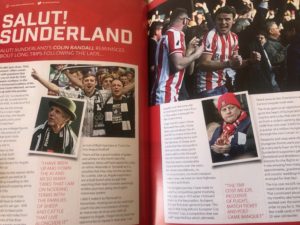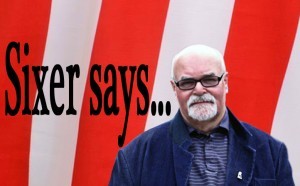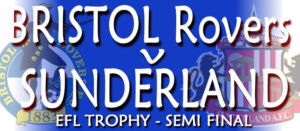
Monsieur Salut writes: for those who bought the matchday programme on Saturday, it is worth pointing out that the article attributed to me was in fact the work of Pete Sixsmith. He was reflecting on the distances that have to be covered by supporters wishing to attend away games, obviously a topic of interest to the impressive bunch of Argyle fans who made the trek to Sunderland …
The BBC quiz show, Only Connect, often comes up with questions that ask you to look for links between numbers. In the time-honoured tradition of Ms Victoria Coren Mitchell, we have come up with this puzzler:
Plymouth 122, Sunderland 94; Plymouth 46, Sunderland 14; Plymouth 408, Sunderland 403.
Could they be the innings scores of a cricket triple header? Are they the results of some particularly poor basketball matches?
In fact, they are mileage figures and reflect the amount of travelling that both clubs have to do in whichever division they are in.
The first applies to the shortest trips that both sets of fans gave had to make this year – Bristol Rovers for Argyle, Bradford City for us. The second relates to the nearest derby game, both of which are held at St James’ Park with us travelling to the dark side and Plymouth popping along the A38 to Exeter City while the third is the longest trips that both clubs will have to make in the PL/EFL set ups – 408 miles from Plymouth to Newcastle and marginally shorter 403 miles from Wearside to the banks of the River Tamar.
Neither of us eagerly await the arrival of Blyth Spartans or Truro City into league football.
There will be a good number of green and whites in the North East this weekend (correct – including M Salut’s mate Geoff Lakeman).
Many will have opted for a stay on either Wearside or Tyneside as it is possible that they may not be up here for a while. Like us, Argyle supporters are a loyal bunch who accept that watching their team involves seemingly endless journeys along the English motorway system.

I didn’t make it to Plymouth in November, missing out on an overnight coach trip and a succession of stops at motorway services and, with all respect to Argyle, I hope not to have the opportunity to repeat it next year. I am equally sure that one visit to the North East every four or five years is enough for the Green Army.
Over the 50+ years I have followed The Lads, I have been up and down the A1 and M1 so many times that I am nodding terms with the families of sheep and cattle that live alongside it.
Almost every away game starts with a ride through North Yorkshire on a road that has seen considerable improvements over the years. No more roundabouts, no more junctions, no more transport cafes; now, we have six-lane highways, flyovers and Moto.
The longest journey I have made to watch a competitive game involving the Lads was in 1973 when I followed them to the Nepstadion, Budapest for our first ever game in Europe, vs Vasas Budapest. This was in the long defunct European Cup Winners Cup, a competition that was well regarded but which ultimately faded away as the Champions and Europa Leagues took over.
The draw gave us an opportunity to go to the heart of Europe and visit a country and a city that was only 17 years on from a violent uprising against the USSR that cost over 3.000 lives and saw a quarter of a million Hungarians flee through the Iron Curtain to the west.
Passports and visas were obtained, Hungarian forints were purchased and, at a very early hour on September 19, Sunderland supporters gathered at Ponteland and Middleton St George airports for the flights to Budapest. It was amazing how many hospital appointments, grandmother’s funerals and cousins’ weddings had been arranged for that day.
The trip cost me £29, inclusive of flight, match ticket and post-game banquet. That constituted about 70 per cent of my monthly take home pay so I had worked over the summer holiday in order to pay for it.
There were very few credit cards in 1973 and none for a 22-year-old teacher.
The aircraft that took us there was a de Havilland Comet, the first commercial jet airliner and proudly British. This one, part of the Dan-Air fleet had no such problems and it got us to Budapest in a little under two hours.
For some (me) it was their first flight and their first trip abroad.
It poured down all day in Budapest. The twin cities (Buda above the Murky Grey Danube, Pest on the plain) showed signs of the rebellion – masonry was missing and bullet holes could be seen but for the 1,000 or so Sunderland supporters it was a wonderful experience. We sampled Eastern European coffee which was as far removed from the Birds Mellow that we drank at home as the local red wine, Bull’s Blood, was from the Hirondelle that was sold in Peter Dominics.
After a day of wandering around a wet city and chuckling at the Trabants and Lada’s that wheezed along the roads, we were picked up by coaches and taken to the Nepstadion, the place where the Hungarian national team had thrashed England 7-1 in 1954.
Those of us still sober watched the second half of a UEFA Cup tie between Ferencvaros and Gwardia Warszawa which ended 0-1 and was greeted with whistles and jeers by the Hungarian crowd. Polish troops had been heavily deployed in 1956….
Our game started about 9pm and this was the last time that the FA Cup winning side played a
full game together as Richie Pitt was injured in the next game at home to Luton Town and never
played again. We scored two sublime goals, a back header from Billy Hughes in the 67 th minute and then a wonderful, jinking run from Dennis Tueart in the last minute put the icing on the cake.
The post match banquet was held in the Fisherman’s Castle overlooking the Murky Grey Danube and the Bull’s Blood and Tokay flowed like Vaux Samson and Lorimer’s Best Scotch. The referee, the world famous Sergio Gonella, turned up and was serenaded with “We went to Wembley Stadium”
and possibly “The Lambton Worm” and we filed aboard our return Comet at about 1am.
It was an unforgettable day, the first of many we hoped. Alas, a defeat by eventual winners Sporting Lisbon, knocked us out and we have never been in Europe since.
We live in hope. Ha’way The Lads.

The Comet was the forerunner of the Nimrod Maritime Patrol Aircraft introduced into the RAF in 1969. In 1979 I was part of a crew that travelled to Naval Air Station Patuxent River, Maryland, for a joint exercise with the US Navy and Canadian Armed Forces. Virtually the whole base turned out to watch us land, as the USN/CAF were still operating prop driven aircraft. The Nimrod was a wonderful aircraft but was sadly retired in 2011. If you want to see one get yourself along to RAF Cosford Museum near Wolverhampton.
Lovely piece. I remember watching the Lisbon game at Roker Park. I was 11. It felt very exotic. One clown in front of me yelled “come on, you can beat these f@@@ing monkeys”. It was a comment that jarred. I remember thinking these “monkeys” were playing us off the park….tbh at 11 i’m not sure if my analysis of the game was correct. I am happy to say that my intolerance of ignorance and bigotry has not abated
A bookend to this was when we were yoyoing to and from the Premiership. Arsenal was the last game and they spanked us 4-0 (i think). Thierry Henri came to take a corner and what seemed like the whole end stood to applaud him. I was very proud of my club which is odd considering the season we had.
I am very proud of my club in 2019. They seem to have reconnected with the majority who are decent folk